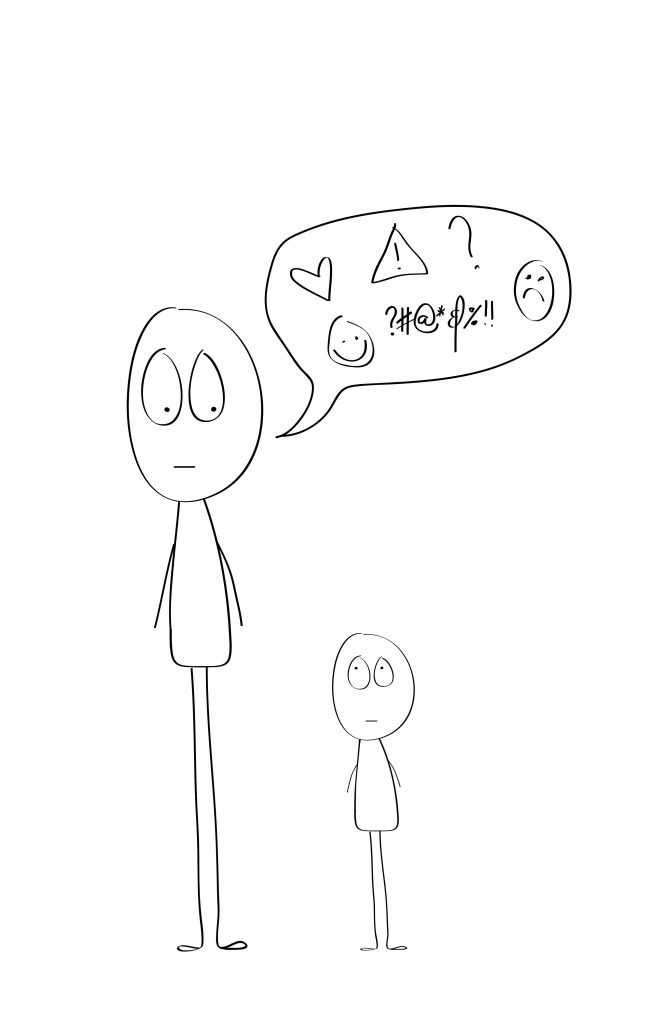
Children need different kinds of help from their parents. In addition to large doses of love, comfort, good times, and encouragement, they also need sound boundary setting, letting them know what is okay to do and what is not ok to do. They need rules! But rules also require help to comply with rules, and that is the key to sound boundary setting.
Sound boundary setting contains three main ingredients:
- Clarity – that the child is given a simple and clear message about the boundary being set.
- Caretaking – that the child is taken care of in his emotional reactions to the boundary setting.
- Explanation – that the child gets an adjusted explanation of why the boundary was set.
Setting boundaries often leads to emotional reactions in both in both the child and the adult. It can therefore be challenging to set boundaries in a way that does not lead to unnecessary conflict and painful experiences. At the same time, we sometimes fail as parents in boundary setting – and that’s fine. When you notice that you have not set the boundaries in an good enough way, you can consider if you want to apologize to your child for the way you handled the situation. If you want to read about how to apologize in an emotionally sound manner, you can click here.
Here are some tips that may be useful in sound boundary setting:
Learn Emotion Coaching
Even if you set boundaries perfectly, your child will probably have emotional reactions to the boundary setting. These emotional reactions may be good to meet with emotion coaching, while at the same time maintaining the boundary. Click here for input on emotion coaching.
Pick your battles
If you have too many rules and boundaries it becomes a full time job for you to set them and for the child to abide by them, leaving little room for the other important stuff in parenting. See if you can raise your awareness of what are important boundaries and rules, and which ones can you let slide.
Be specific
Many parents struggle with being specific in communcating to their child about boundaries. For instance, many parents uses the phrases: “Be careful!”, “Don’t make such a mess,” “Stop that!” For children these are not clear and easily understandable messages. They lack specificity about what to actually do. Rather, be specific about what you want your child to do or not to do. For example, if you child is carrying too many object which he might drop to the floor, say: “I want you to put your glass down before you carry on.” or, “I want you to put your shoes on the rack, please.”
Try to be consistent
Many parents throw out many rules and boundaries, without following through. If we as parents set rules and boundaries without following through, it can be confusing for children. Rather, choose fewer rules and follow through.
Don’t be rigid
Boundaries are meant as guidance, not as a power demonstration. If you see that your child is not able to comply with the rules, and you get into unnecessary power struggles, see if you can meet the child half way, finding a solution that maintains some important boundaries, while at the same time the child gets his say. For example, if you have set a limit of one glass of soda, and your child is tired and “reaaaallly thirsty”, then say, “I said one glass, but since you’re so thirsty you can get a little extra sip today”.
Let your child save face
Especially for a little older children it may feel humiliating when parents set limits. With increasing age, children should have more to say about boundaries and rules. And although it is still important with boundaries it is also important that the child gets increasingly more experience with setting their own rules. They need both to not feel powerless and shamed, and they need to practice how to influence their surroundings and feel self assertion. The best way you can allow children to save face is to recognize that they are bigger and can decide more themselves, while at the same time communcating your concerns and maintaining important boundaries.
Breath! And talk about it afterwards
You didn’t lose even if the boundary wasn’t respected. Especially with teenagers, it is important to know that boundaries will be tested. If the situation escalates, breathe and take a break. Children learn a lot about boundaries by talking about it after the angriest feelings have resided. Remember that boundaries aren’t about every occasion but how it is resolved in the future. It is easier to talk about baoundaries in peaceful times. And, you always get a second chance!
Aquaint yourself with your parenting style
Do you tend to become too permissive or too rigid? Be conscious of your tendencies and work with your own challenges around this theme. Perhaps other exercises on this page can be of use, for example: My parenting style and Interaction with my child.
